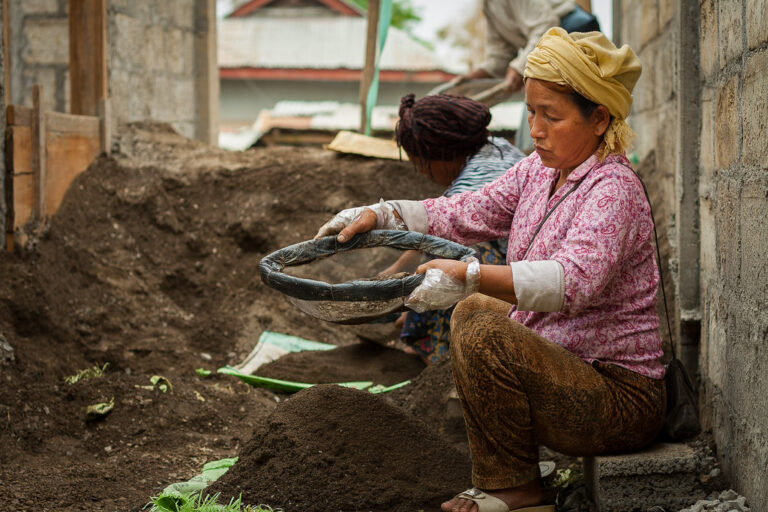
Published last year, Jamil Nasir’s tome, Development Challenges of Pakistan: Constraints and Choices (PalgraveMacmillan) is a well-researched effort, marked by sincerity, to investigate Pakistan’s under-development. Covering a lot of ground, from economic growth to culture and Pakistan’s militancy challenge, it offers valuable information. Citations from expert literature reflect author’s broad scholarly reach.
However, his description of the problem (i.e. Pakistan’s under-development) is simple and familiar: “Pakistan was able to initiate economic growth like East Asian countries but it failed to sustain it broadly due to inequitable distribution of resources, lack of focus on human resource development, and continuation of outmoded colonial governance structure” (p,vi). His solution to the myriad of development challenges facing Pakistan is also uncomplicated. He emphasises human development to overcome under-development (pp 8-9). “The best way to divide the dividends of growth among the people is to invest in human resource,” Nasir states (p, ix).
Likewise, he endlessly emphasises economic growth: 7% economic growth and Pakistan will be a mid-ranking economy in the world (pp 17-18). The author understands that economic growth does not automatically translate into higher living standards for all. To ensure that economic growth benefits all and sundry, Nasir introduces the factor of inclusivity: “There is a need to understand the relationship between inclusion and growth. It is as simple as the story of a household. If all the members of a household are working and earning, the household income will rise” (pp 8-9).
Alas!
Development is an ideologically motivated, contentious term. Nasir often-times, implicitly, confuses development with growth and avoids a theorization of development. In my view, development is synonymous with human rights. Grounded in the Enlightenment values, human rights, in turn, constitute an unfolding agenda. This agenda covers the basic human needs as well as the “rights of mother earth”. Not merely development, Nasir’s work in general suffers from a singular lack of theorization. Hence, single-mindedly descriptive and eclectic. Take, for instance, into account his claim about inclusive growth: “If all the members of a household are working and earning, the household income will rise”. All the members in peasant household have been working for centuries yet their income in global South remains depressed since time immemorial. Let us also consider the notion of work from a feminist perspective. Feminists, even some liberal ones, have theoretically and empirically demonstrated that domestic women labour – vital for reproducing capitalism – remains unpaid. Likewise, we can not have inclusive growth without addressing the question of power concentration (on class basis).
Nasir mourns low-literacy, poor governance, ill-equipped universities, lack of innovation, dearth of ideas, conservative culture and of course corruption patronised by dynastic politicians. For theoretical rescue, he occasionally appeals to institutionalism a la Douglas North. However, he refrains from dissecting the two inter-related factors holding back development in Pakistan. Firstly, the nature of the Pakistani state. Secondly, the status of Pakistan as a periphery economy in the global hierarchy. References to South Korea or China, studded with comparative data from the 1950s, do not offer any convincing argument.
It will not be a huge digression to detain ourselves here with South Korea for a while because Nasir like many mainstream scholars, keeps comparing Pakistan right, left, centre. Elevation of a periphery economy to the status of semi-periphery (or subimperialism) is not determined by some policymaking by the ruling elite. One must take into account extra-economic factors to understand South Korean development. It occurred in the context of Cold War. According to Vivek Chibber, South Korean miracle owes to “the emergence of an alliance of Korean and Japanese firms, which gave the former group access to export markets that would otherwise have been inaccessible”. This alliance was encouraged by Washington, the patron saint of the erstwhile “free world”, and it was possible only during the Cold War. Likewise, Toussaint (2024) highlights, among other factors, the US-imposed land reforms in South Korea and US financial generosity. Thus says Toussaint, “…On the other hand, [South Korea] received over USD 3,100 million as grants from the United States over the same period…It represents twice what the Benelux countries received from the Marshall Plan, one third more than France received, 10% more than Britain. The grants Korea received from 1945 to 1961 amount to more than the World Bank’s total loans to newly independent developing countries”.
Pakistan, like most global South economies, had no Japan in the neighbourhood. Land reforms never went beyond lip service. Most importantly, Pakistan was/is not able to avoid the debt trap. Again, Toussaint’s works will indeed be useful to understand the structural causes behind Third World’s debt trap, I will rather refer here to Akmal Hussain’s research in relation to Pakistan.
Balance of Payment as Structural Constraint:
Hussain does not subscribe to mainstream wisdom: “Pakistan was able to initiate economic growth like East Asian countries but it failed to sustain it broadly due to inequitable distribution of resources”. According to Hussain, the civil-military bureaucracy gained the upper hand in orientating public and economic policies early on. Like many post-colonial states, Pakistan adopted import substitution industrialisation (ISI) in the consumer goods sector by nurturing private enterprise. Likewise, a policy of “functional inequality,” a la Simon Kuznet, was introduced. This strategy of unequal growth – accentuating inequality – was deployed in order to enable the capitalist class to accumulate more capital so that the rich have a higher level of savings. It was assumed that these savings would be invested in industry, resulting in higher economic growth. This policy has “persisted to this day,” claims Hussain. The result of these policies in the 1960s has recurred almost every ten years: exports based on primary goods and low-value-added agriculture-based manufactures do not keep pace with the import requirements of a rapidly growing manufacturing sector. This, in turn, leads to two consequences. First, a balance of payment crisis after growth slows down following an initial spurt. Second, foreign aid was/ is deployed to overcome the economic slowdown.
Hussain explains the balance of payments crisis in the following manner. Firstly, “the investment rate necessary to generate a 6 per cent GDP growth (without foreign aid) is 24 per cent of the GDP. Since the actual domestic savings rate has been around 12 per cent, there is a gap of 12 per cent of the GDP which must be filled by foreign savings,” (foreign direct investment, foreign loans or grants, etc). The balance of payments crisis pushes the country into the IMF’s lap (this was not the case with South Korea as Toussaint observes, above). In other words, like any periphery economy, Pakistan can not escape dependency. However, this dependency is not mere financial.
Next, according to Hussain, every time the economy grows at the rate of 6 per cent, a balance of payment crisis occurs owing to the underdeveloped nature of the economy: “every high GDP growth period has been brought to an end with a balance of trade crisis. This means that due to persistently slow export growth, the foreign exchange earnings are insufficient to finance the rising import requirements of high GDP growth.” In other words, when economy is growing in Pakistan, it is actually heading for a crisis owing to its dependent nature because to meet high export demand, it must import expansive technology, disturbing the balance of payment. Hence, “magic of 7%” (p 17) Nasir advocates, is structurally constrained. This also implies: Pakistan’s development challenges have to be understood in the context of global capitalism. His work simply ignores this dimension.
Praetorian Nature of Pakistani State:
Consider the following statement by Nasir: “The quality of leadership does matter for shaping the destiny of a nation but even democratic leadership does not necessarily guarantee prosperity if the political system is marred by instability and bad governance and if democracy is just a plaything for the few families with power and privilege. Strangely, high economic growth in countries like South Korea and China took place under non-democratic regimes”. He also refers to high economic growth under dictatorships in Pakistan, and observes, “Some empirics also show that the type of regime is neutral for economic growth. If a democratic regime does not ensure good governance, it would, in all probability, fail on the promise of high economic growth. For instance, the decade of 1990s was a big disaster for Pakistan from the perspective of economic growth despite democratic rule in the country” (p vii). Before analysing the claim “that the type of regime is neutral for economic growth”, let us look at his case study: “the decade of 1990s was a big disaster for Pakistan from the perspective of economic growth despite democratic rule in the country”.
In the 1990, the general elections were heavily rigged in favour of the right-wing coalition, Islamic Democratic Front (IJI), headed by Nawaz Sharif. While rigging in elections is not a news. However, in the case of 1990, rigging was acknowledged by the Supreme Court. In the famous Asghar Khan case, the Supreme Court issued a ruling in 2012 (after 16 years of hearing), that the army chief, Aslam Beg, and the ISI czar, Asad Durrani, rigged the 1990 elections (Dawn, 2012). Not merely, the mandate in 1990 was stolen, four successive governments in the 1990s were removed by the military. Can anybody claim that there was a democratic rule in the 1990s’ Pakistan? And herein lies the other major flaw with Nasir’s work. He simply ignores the praetorian character of the Pakistani state. Though nobody denies or defends corruption and ill-governance attributed to Pakistan’s political elite yet these are not the taproots of Pakistan’s under-development. Corruption, politics of patronage, bad governance etc etc are the symptoms. The inter-related causes are: Pakistan’s periphery status in global hierarchy and the nature of the state (see inter alia Sulehria, 2024[available online]).
Before conclusion, I also want to comment on Chapter 3 titled, Culture and Growth, because Nasir devotes a section of the chapter to knowledge production. “What is needed is productive knowledge that is knowledge connected to economic growth and livelihoods,” he argues. Why Pakistan is not doing it? His crisp reply: “First, we lack a culture of research and innovation. Second, we do not distinguish productive knowledge from other types of knowledge. Third, we write books on subjects that fall at the lower end of the hierarchy of knowledge with regard to economic growth. Travelogues, biographies, and religious books…”. His neoliberal suggestion is, “Public money need not be spent on stipends and subjects that do not promote productive knowledge” (pp 60-61).
Is this a Pakistan-specific problem? Is knowledge-production a matter of choice and policy-making? How come knowledge production, historically and contemporarily, been a vocation of imperial economies (or to a lesser extent, post-capitalist economies)? Nasir does not bother about any such nuances. But, pray, the neoliberal suggestion to stop subsidising non-productive knowledge is indeed scary. This is a recipe for fascism in the age of Trumpism.
Bibliography:
Chibber, V (1999) Building a development state: The Korean case reconsidered. Politics & Society. Vol 27, Issue 3. 9PAS99.VP:CorelVentura 7.0
Dawn (2012) 1990 election was rigged, rules SC. Oct 19. 1990 election was rigged, rules SC – Pakistan – DAWN.COM
Hussain, A (2024) Pakistan, Institutional Instability & Underdevelopment: State, People and Consciousness. Lahore: Folio Books.
Sulehria, F (2024) ‘Social protection in Pakistan: Scant, Sparse, and Sketchy’.
In ‘Poverty and Vulnerability Report 2024’. South Asian Alliance for Poverty Alleviation’s (SAAPE).
Toussaint, E (2024) The South Korean miracle is exposed. CADTM. April 10. The South Korean miracle is exposed




Merely wanna input that you have a very nice web site, I enjoy the style it actually stands out.